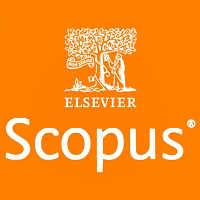
Статья размещена в открытом доступе и распространяется на условиях лицензии Creative Commons Attribution (CC BY).
ОРИГИНАЛЬНОЕ ИССЛЕДОВАНИЕ
Интравитальная конфокальная микроскопия в изучении доставки противоопухолевых нанопрепаратов
1 Национальный исследовательский технологический университет «МИСиС», Москва, Россия
2 Национальный медицинский исследовательский центр психиатрии и наркологии имени В. П. Сербского, Москва, Россия
3 Российский национальный исследовательский медицинский университет имени Н. И. Пирогова, Москва, Россия
Для корреспонденции: Елизавета Викторовна Иванова
Ленинский проспект, д. 4, стр. 1, 119049; Москва, Россия; ur.sisim.ude@4103081m
Финансирование: исследование выполнено за счет гранта Российского научного фонда (проект № 21-74-20077).
Вклад авторов: Е. В. Иванова, В. А. Науменко — написание текста, подготовка иллюстраций; А. С. Гаранина, М. А. Абакумов — редактирование текста.
- Ahlawat J, et al. Nanoparticles in Biomedical Applications. In: Green Nanoparticles. Springer, Cham, 2020; p. 227–250.
- Nakamura Y, et al. Nanodrug Delivery: Is the Enhanced Permeability and Retention Effect Sufficient for Curing Cancer? Bioconjug Chem. 2016; 27 (10): 2225–38.
- Bertrand N, et al. Cancer nanotechnology: the impact of passive and active targeting in the era of modern cancer biology. Adv Drug Deliv Rev. 2014; 66: 2–25.
- Wilhelm S, et al. Analysis of nanoparticle delivery to tumours. Nat Rev Mater. 2016; 1 (5): 16014.
- Danhier F. To exploit the tumor microenvironment: Since the EPR effect fails in the clinic, what is the future of nanomedicine? J Control Release. 2016; 244 (Pt A): 108–21.
- Mitchell MJ, King MR. Leukocytes as carriers for targeted cancer drug delivery. Expert Opin Drug Deliv. 2015; 12 (3): 375–92.
- Tiet P, Berlin JM. Exploiting homing abilities of cell carriers: Targeted delivery of nanoparticles for cancer therapy. Biochem Pharmacol. 2017; 145: 18–26.
- Xue J, et al. Neutrophil-mediated anticancer drug delivery for suppression of postoperative malignant glioma recurrence. Nat Nanotechnol. 2017; 12 (7): 692–700.
- Chu D, et al. Photosensitization Priming of Tumor Microenvironments Improves Delivery of Nanotherapeutics via Neutrophil Infiltration. Adv Mater. 2017; 29 (27): 1701021.
- Chu D, et al. Nanoparticle Targeting of Neutrophils for Improved Cancer Immunotherapy. Adv Healthc Mater. 2016; 5 (9): 1088–93.
- Luo X, et al. Neutrophil-mediated delivery of pixantrone-loaded liposomes decorated with poly(sialic acid)–octadecylamine conjugate for lung cancer treatment. Drug Deliv. 2018; 25 (1): 1200–12.
- Smith BR, et al. High-resolution, serial intravital microscopic imaging of nanoparticle delivery and targeting in a small animal tumor model. Nano Today. 2013; 8 (2): 126–37.
- Smith BR. et al. Selective uptake of single-walled carbon nanotubes by circulating monocytes for enhanced tumour delivery. Nat Nanotechnol. 2014; 9 (6): 481–7.
- Qiang L, et al. A novel macrophage-mediated biomimetic delivery system with NIR-triggered release for prostate cancer therapy. J Nanobiotechnology. BioMed Central. 2019; 17 (1): 83.
- Chen K, et al. A TRAIL-Delivered Lipoprotein-Bioinspired Nanovector Engineering Stem Cell-Based Platform for Inhibition of Lung Metastasis of Melanoma. Theranostics. 2019; 9 (10): 2984–98.
- Hanahan D, Weinberg RA. Hallmarks of cancer: The next generation. Cell. 2011; 144 (5): 646–74.
- Schießl IM, Castrop H. Deep insights: intravital imaging with two-photon microscopy // Pflugers Archiv European Journal of Physiology. Springer Verlag. 2016; 468 (9): 1505–16.
- Naumenko V, Jenne C, Mahoney DJ. Intravital microscopy for imaging the tumor microenvironment in live mice. Methods Mol Biol. 2016; 1458: 217–30.
- Li JL, et al. Intravital multiphoton imaging of immune responses in the mouse ear skin. Nat Protoc. 2012; 7 (2): 221–34.
- Ritsma L, et al. Surgical implantation of an abdominal imaging window for intravital microscopy. Nat Protoc. 2013; 8 (3): 583–94.
- Stolp B, Melican K. Microbial pathogenesis revealed by intravital microscopy: pros, cons and cautions. FEBS Lett. 2016; 590 (13): 2014–26.
- Miller MA, Weissleder R. Imaging the pharmacology of nanomaterials by intravital microscopy: Toward understanding their biological behavior. Adv Drug Deliv Rev. 2017; 113: 61–86.
- Inturi S, et al. Modulatory Role of Surface Coating of Superparamagnetic Iron Oxide Nanoworms in Complement Opsonization and Leukocyte Uptake. ACS Nano. 2015; 9 (11): 10758–68.
- Arami H, et al. In vivo delivery, pharmacokinetics, biodistribution and toxicity of iron oxide nanoparticles. Chem Soc Rev. 2015; 44 (23): 8576–607.
- Miller MA, et al. Tumour-associated macrophages act as a slow-release reservoir of nano-therapeutic Pt(IV) pro-drug. Nat Commun. 2015; 6: 8692.
- Naumenko V, et al. Neutrophils in viral infection. Cell Tissue Res. 2018; 371 (3): 505–16.
- Naumenko V, et al. Neutrophil-mediated transport is crucial for delivery of short-circulating magnetic nanoparticles to tumors. Acta Biomater. 2020; 104: 176–87.
- Naumenko VA, et al. Extravasating Neutrophils Open Vascular Barrier and Improve Liposomes Delivery to Tumors. ACS Nano. 2019; 13 (11).
- Moghimi SM, Simberg D. Nanoparticle transport pathways into tumors. J Nanoparticle Res. 2018; 20 (6): 169.
- Park SA, Hyun Y-M. Neutrophil Extravasation Cascade: What Can We Learn from Two-photon Intravital Imaging? Immune Netw. 2016; 16 (6): 317–21.
- Naumenko V, et al. Intravital microscopy reveals a novel mechanism of nanoparticles excretion in kidney. J Control Release. 2019; 307: 368–78.
- Yang K, et al. Graphene in Mice: Ultrahigh In Vivo Tumor Uptake and Efficient Photothermal Therapy. Nano Lett. 2010; 10 (9): 3318–23.
- Yang K, et al. In Vivo Pharmacokinetics, Long-Term Biodistribution, and Toxicology of PEGylated Graphene in Mice. ACS Nano. 2011; 5 (1): 516–22.
- Gary-Bobo M, et al. Mannose-Functionalized Mesoporous Silica Nanoparticles for Efficient Two-Photon Photodynamic Therapy of Solid Tumors. Angew Chemie Int Ed. 2011; 50 (48): 11425–9.
- Lu J. et al. Biocompatibility, biodistribution, and drug-delivery efficiency of mesoporous silica nanoparticles for cancer therapy in animals. Small. NIH Public Access. 2010; 6 (16): 1794–805.
- Fischer NO, et al. Evaluation of nanolipoprotein particles (NLPs) as an in vivo delivery platform. PLoS One. 2014; 9 (3): e93342.
- He Q, et al. In vivo Biodistribution and Urinary Excretion of Mesoporous Silica Nanoparticles: Effects of Particle Size and PEGylation. Small. 2011; 7 (2): 271–80.
- He X, et al. In vivo study of biodistribution and urinary excretion of surface-modified silica nanoparticles. Anal Chem. 2008; 80 (24): 9597–603.
- Fu C, et al. The absorption, distribution, excretion and toxicity of mesoporous silica nanoparticles in mice following different exposure routes. Biomaterials. 2013; 34 (10): 2565–75.
- Gómez-Vallejo V, et al. PEG-copolymer-coated iron oxide nanoparticles that avoid the reticuloendothelial system and act as kidney MRI contrast agents. Nanoscale. 2018; 10 (29): 14153–64.
- Ruggiero A, et al. Paradoxical glomerular filtration of carbon nanotubes. Proc Natl Acad Sci U. S. A. 2010; 107 (27): 12369–74.
- Jasim DA, et al. Tissue distribution and urinary excretion of intravenously administered chemically functionalized graphene oxide sheets. Chem Sci. 2015; 6 (7): 3952–64.
- Jasim DA, et al. The Effects of Extensive Glomerular Filtration of Thin Graphene Oxide Sheets on Kidney Physiology. ACS Nano. 2016; 10 (12): 10753–67.
- Huang X, et al. The shape effect of mesoporous silica nanoparticles on biodistribution, clearance, and biocompatibility in vivo. ACS Nano. 2011; 5 (7): 5390–9.
- Nair AV, et al. Characterizing the interactions of organic nanoparticles with renal epithelial cells in vivo. ACS Nano. 2015; 9 (4): 3641–53.
- Naumenko VA, et al. Intravital imaging of liposome behavior upon repeated administration: A step towards the development of liposomal companion diagnostic for cancer nanotherapy. J Control Release. 2021; 330: 244–56.
- Fisher DT, et al. Intraoperative intravital microscopy permits the study of human tumour vessels. Nat Commun Nature Publishing Group. 2016; 7 (1): 1–9.
